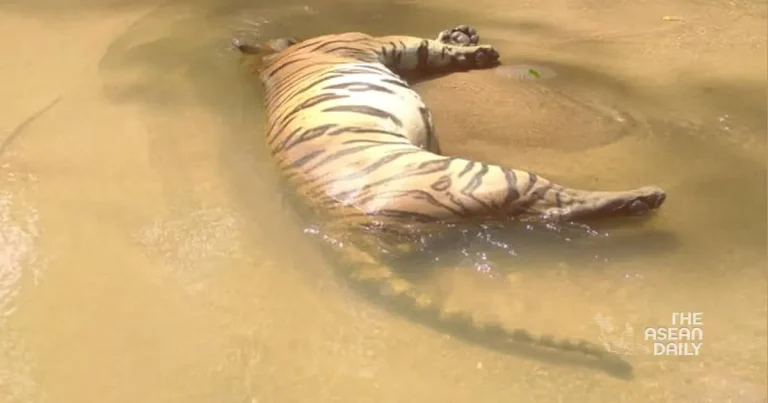30-6-2024 (KUALA LUMPUR) The recent discovery of a Malayan tiger’s carcass floating in the Sungai Pergau river in Kuala Krai, Kelantan, has raised concerns among conservationists, who doubt that drowning was the cause of death for the majestic beast. As authorities await the results of the post-mortem examination, experts suggest that the exceptional swimming abilities of the Malayan tiger make it unlikely for a healthy individual to succumb to drowning.
Dr. Mark Rayan Darmaraj, the country director of the Wildlife Conservation Society Malaysia Programme, noted that while the tiger appeared healthy externally, internal examinations could reveal the actual cause of death. “The death of this tiger could be anything from disease, poisoning, a gunshot, an infected wound from a snare, or some other natural cause,” he said in an interview, emphasizing the importance of awaiting the post-mortem results before speculating on the circumstances surrounding the tiger’s demise.
The Wildlife and National Parks Department (Perhilitan) confirmed the discovery of the tiger’s carcass floating in the river, with a picture of the deceased animal going viral on social media. According to Mohamad Hafid Rohani, the Kelantan Perhilitan director, the carcass had been sent to the National Wildlife Rescue Centre in Sungkai, Perak, for an autopsy. So far, no signs of injuries from gunshots or snares have been found on the deceased beast.
This incident comes just over a month after another adult tiger was found dead beside the Kuala Lumpur-Karak Expressway near Lentang in Bentong, believed to have been struck by a vehicle.
The Malayan tiger, a subspecies found in the Malay Peninsula, is facing a dire situation, with fewer than 150 individuals remaining in the wild, according to the first National Tiger Survey conducted from 2015 to 2020. Darmaraj emphasized the gravity of the situation, stating that “the loss of even a single animal is a blow to the species due to the extremely low number of animals left in the wild, which are further scattered into smaller sub-populations.”
The species faces multiple threats, including poaching, habitat loss, depletion of prey species, retaliatory killing due to human-tiger conflict, and being hit by vehicles where roads bisect tiger habitats. “All efforts need to be taken to ensure this species can persist in the wild over the long term,” Darmaraj said.
Vincent Chow, the president of the Malaysian Nature Society, also believes that the tiger in this case could not have drowned and suspects that poisoning may have been the cause. “My guess is that the tiger was poisoned… unless the post-mortem can show proof of bullet holes, that it was injured, fell into the river and died,” he said, adding that from the picture, the carcass looked normal.
Chow expressed concern about the ongoing threat of poaching, calling for joint meetings between non-governmental organizations and the government to tackle this issue. “We need to look deeply into this issue… because I think the outlook for the tiger to survive another 10 years is going to be very slim,” he warned.
While awaiting the post-mortem results, both Darmaraj and Chow emphasized the importance of addressing the multiple threats faced by the Malayan tiger and taking concerted efforts to ensure the survival of this unique subspecies. They also highlighted the need for better networking between wildlife authorities and local communities to promote two-way communication and address human-wildlife conflicts in remote areas where sightings occur.




